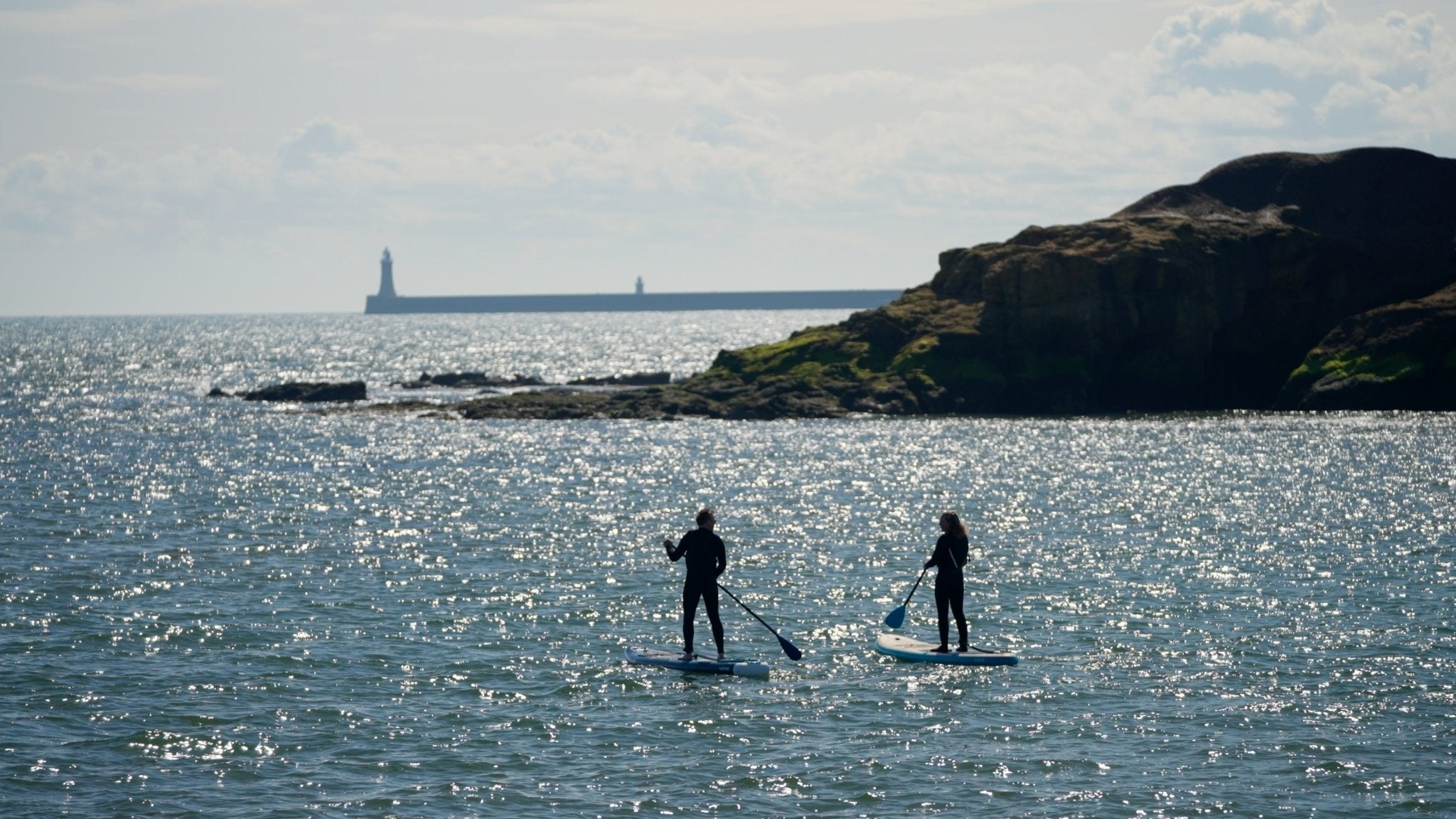Paddle boarding's popularity has surged in recent years, attracting enthusiasts from diverse backgrounds who seek the perfect blend of adventure and tranquillity. As this thrilling water activity continues to take the world by storm, it's crucial to prioritise safety for a memorable and incident-free experience. In this blog, we'll explore invaluable safety tips sourced from the Royal National Lifeboat Institution (RNLI) and their comprehensive guide to stand-up paddle boarding. So, let's dive into the world of safety and discover how to enjoy the sea while staying safe!
We recently spoke to Taryne-Rose, RNLI Water Safety Delivery Support, North and East, who took us through the key safety measures the RNLI, alongside other National Governing Bodies (NGBs), advise paddleboarders to take every time they go out on the water include:

Be Prepared
Before heading out, it's crucial to check weather conditions, tides, and any potential hazards in the area. Plan your route accordingly, considering factors such as wind direction and strength. By being prepared, you can make informed decisions and reduce the risk of encountering unforeseen challenges.
Wear a Buoyancy Aid
Always wear a suitable personal flotation device (PFD) or a buoyancy aid while paddle boarding. It's your lifeline in case of emergencies and provides extra safety, especially if you're new to the sport or paddling in challenging conditions. Additionally, a leash attached to your paddle board ensures you stay connected to your board at all times. Wearing the correct leash to stay connected to your board if you get into trouble and to help you float.
Know Your Limits
Understand your skill level and choose suitable locations and conditions for paddle boarding. If you're a beginner, stick to calm, sheltered waters with minimal hazards. As you gain experience and confidence, gradually explore more challenging environments. Knowing your limits and staying within them is crucial for your safety and enjoyment.
Safety Equipment
Carry a means of communication, such as a fully charged mobile phone, in a waterproof pouch or a VHF radio if you venture further from the shore. Make sure to carry this on you somewhere accessible, for example around your neck. Taryne advised that “‘In a coastal emergency call 999 and ask for the Coastguard or, if you are inland, ask for the Fire and Rescue service.” A whistle or signalling device is also essential for attracting attention if you require assistance. It's better to have these items readily available and never need them than to find yourself in a challenging situation without any means of communication.

Avoid Offshore Winds
Avoiding offshore winds that can quickly blow you and your paddle board far out to sea making it difficult to paddle back to shore. To do so keep an eye out for the orange windsock on lifeguarded beaches to see which way the wind is blowing.
Be Aware of Your Surroundings
Stay vigilant and be aware of other water users, including boats, swimmers, and fellow paddlers. Keep a safe distance from obstacles such as piers, rocks, and buoys. Be mindful of changing conditions, including tidal currents, which can impact your paddling experience. By being observant and aware of your surroundings, you can anticipate potential risks and navigate safely.
Learn and Practise Self-Rescue Techniques
Familiarise yourself with self-rescue techniques, including how to remount your paddle board safely in case of a fall. Taryne advised “remember to Float to Live if you get into trouble in the water: tilt your head back with ears submerged and try to relax and control your breathing. Use your hands to help you stay afloat and then call for help or swim to safety if you can.”
Practise these techniques in calm waters, so you're prepared and confident should you find yourself in an unexpected situation. Knowing how to handle emergencies empowers you to stay calm and take appropriate action.
Happy Paddling!
There are always additional safety steps paddleboarders can take in order to stay safe such as taking SUP lessons, being aware of the environment and hazards, going with someone instead of alone, checking the weather forecast and tide times before setting out, telling someone where you’re going and when you’ll be back, and by wearing suitable clothing for the time of year such as a wet or dry suit.
Paddle boarding is an exhilarating activity that offers endless opportunities for adventure. By prioritising safety, being prepared, and following these guidelines, you can enjoy your paddle boarding experience to the fullest while ensuring your well-being.




Share:
WHAT THE SUP?!
The Power of Vitamin Sea